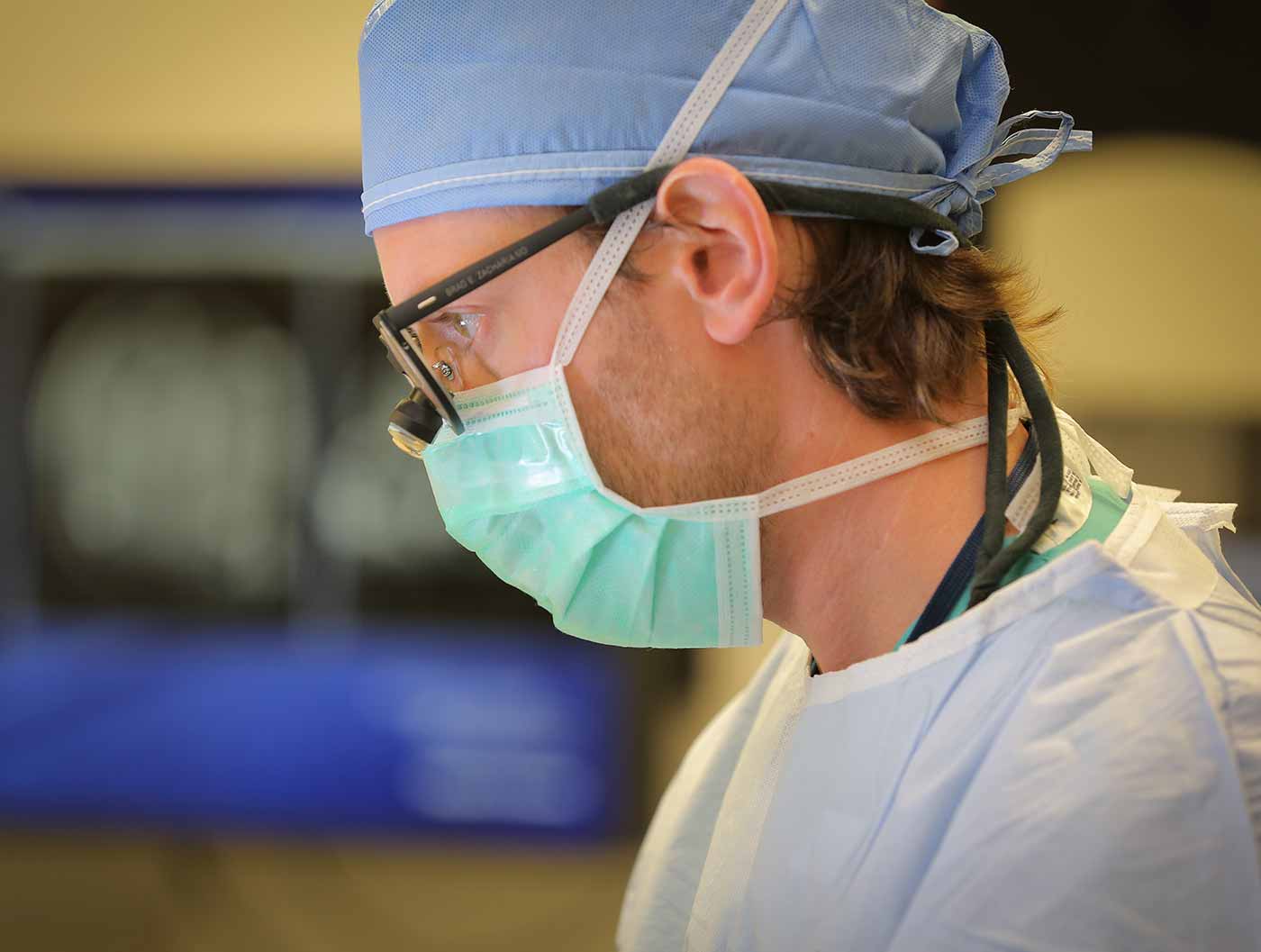Fluorescent Visualization Improves Glioma Tumor Removal
Surgeons can now see a rare cancer with greater precision, leading to more complete surgical removal
Adopted overseas years ago, the optical imaging agent Gleolan only recently gained FDA approval. Taken orally prior to surgery, Gleolan attaches to glioma brain tumors and fluoresces, allowing surgeons to confirm the presence of the brain tumor and therefore remove more malignant tissue.
Early testing found that among patients administered Gleolan dye, 65% had complete tumor removal, compared to 36% complete removal among those who were not administered dye.

“Gleolan helps experienced tumor surgeons push the boundaries of what they can do safely,” says Brad Zacharia, MD, neurosurgeon and neurosurgical-oncologist at Penn State Health Milton S. Hershey Medical Center, associate professor of neurosurgery and otolaryngology and division chief of neuro-oncology and skull-base surgery in the Department of Neurosurgery at Penn State College of Medicine. “For [less-experienced surgeons], it offers a bit of a safety mechanism so that one can resect these tumors more effectively.”
Gleolan in Practice
Because Gleolan is taken orally, it does not require additional set-up time in the OR. Instead, the patient arrives at the hospital shortly before the procedure and takes the Gleolan. Because Gleolan can cause photosensitivity, the patient remains in a dark room prior to the procedure and for 48 hours afterward.
Surgery begins as a normal procedure, with the surgeon removing all known malignant cells. A special blue light is then turned on that causes the Gleolan to fluoresce. Areas that light up indicate the presence of additional malignant cells. That tissue is then removed.
Determining Gleolan’s Reach
Because of its novelty and the rarity of glioma brain tumors, Gleolan has not yet permeated the field. Requiring an expensive specialized microscope adaptation for visualization, it may remain reserved for some time to specialty facilities that have high volumes of such cancers.
As Gleolan use continues, it is unclear whether it will lead to improved long-term outcomes. At this point, Dr. Zacharia is careful to point out that Gleolan does not promise to lead to a curative treatment. Rather, it is a tool that helps identify cancerous cells.
Curative Hope Remains
However, the case for Gleolan remains strong as the use of Gleolan enables more complete tumor resection, which is in turn associated with longer postsurgical survival.
“[Prolonged life expectancy via Gleolan-assisted resection is] a leap we like to make, but it’s not proven,” Dr. Zacharia says. “Every tool gets us ever closer to our goal [of cure], and we think that if we can resect more tumor, people will have improved results.”
Dr. Zacharia emphasizes the need for providers to refer patients with rare cancers to medical centers with advanced technology and experience. He points to medical therapy, immunotherapy and other options being studied in clinical trials at Penn State College of Medicine. For cancers such as glioma that have historically had poor prognosis, these novel research projects and innovative procedures offer hope for improved outcomes — if not now, then in the future.
This article first appeared in Central Pennsylvania MD News October 2021.

Brad E. Zacharia, MD, MS
Associate Professor of Neurosurgery and Otolaryngology
Co-director, Neuro-Oncology Program
Director, Brain Tumor and Skull Base Surgery, Penn State Health Milton S. Hershey Medical Center
Phone: 717-531-4177
Email: bzacharia@pennstatehealth.psu.edu
Fellowship: Neurosurgical Oncology, Memorial Sloan Kettering Cancer Center, New York
Residency: Neurological Surgery, New York Presbyterian Hospital – Columbia University, New York
Medical School: Columbia University College of Physicians and Surgeons, New York
Connect with Brad E. Zacharia, MD, MS, on Doximity
